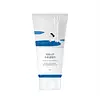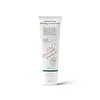What's inside
What's inside
 Key Ingredients
Key Ingredients

 Benefits
Benefits

 Concerns
Concerns

 Ingredients Side-by-side
Ingredients Side-by-side

Water
Skin ConditioningGlycerin
HumectantSodium Cocoyl Alaninate
Lauryl Hydroxysultaine
CleansingDisodium Cocoamphodiacetate
CleansingSodium Methyl Cocoyl Taurate
CleansingAcrylates/C10-30 Alkyl Acrylate Crosspolymer
Emulsion StabilisingButylene Glycol
Humectant1,2-Hexanediol
Skin ConditioningSodium Chloride
MaskingCaprylyl Glycol
EmollientCoco-Glucoside
CleansingArtemisia Annua Extract
MaskingCitric Acid
BufferingSodium Cocoyl Isethionate
CleansingBetula Platyphylla Japonica Juice
Skin ConditioningAnthemis Nobilis Flower Oil
MaskingDisodium EDTA
Pinus Sylvestris Leaf Oil
MaskingHexylene Glycol
EmulsifyingQuillaja Saponaria Bark Extract
CleansingGlyceryl Caprylate
EmollientGlyceryl Glucoside
HumectantSodium Hyaluronate
HumectantHyaluronic Acid
HumectantAscorbic Acid
AntioxidantWater, Glycerin, Sodium Cocoyl Alaninate, Lauryl Hydroxysultaine, Disodium Cocoamphodiacetate, Sodium Methyl Cocoyl Taurate, Acrylates/C10-30 Alkyl Acrylate Crosspolymer, Butylene Glycol, 1,2-Hexanediol, Sodium Chloride, Caprylyl Glycol, Coco-Glucoside, Artemisia Annua Extract, Citric Acid, Sodium Cocoyl Isethionate, Betula Platyphylla Japonica Juice, Anthemis Nobilis Flower Oil, Disodium EDTA, Pinus Sylvestris Leaf Oil, Hexylene Glycol, Quillaja Saponaria Bark Extract, Glyceryl Caprylate, Glyceryl Glucoside, Sodium Hyaluronate, Hyaluronic Acid, Ascorbic Acid
Water
Skin ConditioningGlycerin
HumectantSodium Cocoyl Isethionate
CleansingSodium Methyl Cocoyl Taurate
CleansingPotassium Cocoyl Glycinate
Coco-Betaine
CleansingPotassium Cocoate
EmulsifyingPolyquaternium-67
Xylitylglucoside
HumectantCitric Acid
BufferingAnhydroxylitol
HumectantSodium Chloride
MaskingBetula Platyphylla Japonica Juice
Skin ConditioningXylitol
Humectant1,2-Hexanediol
Skin ConditioningGlucose
HumectantSodium Acetate
BufferingSodium Hyaluronate
HumectantButylene Glycol
HumectantTrehalose
HumectantAllantoin
Skin ConditioningChamomilla Recutita Flower Extract
MaskingGlycyrrhiza Glabra Root Extract
BleachingCamellia Sinensis Leaf Extract
AntimicrobialPerilla Frutescens Leaf Extract
MaskingOryza Sativa Bran Extract
Skin ConditioningHouttuynia Cordata Extract
Skin ConditioningCentella Asiatica Extract
CleansingCalendula Officinalis Flower Extract
MaskingDisodium EDTA
Potassium Benzoate
PreservativeWater, Glycerin, Sodium Cocoyl Isethionate, Sodium Methyl Cocoyl Taurate, Potassium Cocoyl Glycinate, Coco-Betaine, Potassium Cocoate, Polyquaternium-67, Xylitylglucoside, Citric Acid, Anhydroxylitol, Sodium Chloride, Betula Platyphylla Japonica Juice, Xylitol, 1,2-Hexanediol, Glucose, Sodium Acetate, Sodium Hyaluronate, Butylene Glycol, Trehalose, Allantoin, Chamomilla Recutita Flower Extract, Glycyrrhiza Glabra Root Extract, Camellia Sinensis Leaf Extract, Perilla Frutescens Leaf Extract, Oryza Sativa Bran Extract, Houttuynia Cordata Extract, Centella Asiatica Extract, Calendula Officinalis Flower Extract, Disodium EDTA, Potassium Benzoate
 Reviews
Reviews

Ingredients Explained
These ingredients are found in both products.
Ingredients higher up in an ingredient list are typically present in a larger amount.
1,2-Hexanediol is a synthetic liquid and another multi-functional powerhouse.
It is a:
- Humectant, drawing moisture into the skin
- Emollient, helping to soften skin
- Solvent, dispersing and stabilizing formulas
- Preservative booster, enhancing the antimicrobial activity of other preservatives
Betula Platyphylla Japonica Juice is the sap of the Asian White Birch tree. Birch juice has antioxidant, hydrating, and soothing properties.
The high content of amino acids, sugars, and minerals provide the skin with moisture. On top of that, it contains Vitamins C and B (niacinamide). These two superstar ingredients protect your skin while reducing dark spots.
This white birch is currently being studied for potential anti-cancer properties. It has been used in traditional Asian medicine to help treat infections.
Learn more about Betula Platyphylla Japonica JuiceButylene Glycol (or BG) is used within cosmetic products for a few different reasons:
Overall, Butylene Glycol is a safe and well-rounded ingredient that works well with other ingredients.
Though this ingredient works well with most skin types, some people with sensitive skin may experience a reaction such as allergic rashes, closed comedones, or itchiness.
Learn more about Butylene GlycolCitric Acid is an alpha hydroxy acid (AHA) naturally found in citrus fruits like oranges, lemons, and limes.
Like other AHAs, citric acid can exfoliate skin by breaking down the bonds that hold dead skin cells together. This helps reveal smoother and brighter skin underneath.
However, this exfoliating effect only happens at high concentrations (20%) which can be hard to find in cosmetic products.
Due to this, citric acid is usually included in small amounts as a pH adjuster. This helps keep products slightly more acidic and compatible with skin's natural pH.
In skincare formulas, citric acid can:
While it can provide some skin benefits, research shows lactic acid and glycolic acid are generally more effective and less irritating exfoliants.
Most citric acid used in skincare today is made by fermenting sugars (usually from molasses). This synthetic version is identical to the natural citrus form but easier to stabilize and use in formulations.
Read more about some other popular AHA's here:
Learn more about Citric AcidDisodium EDTA plays a role in making products more stable by aiding other preservatives.
It is a chelating agent, meaning it neutralizes metal ions that may be found in a product.
Disodium EDTA is a salt of edetic acid and is found to be safe in cosmetic ingredients.
Learn more about Disodium EDTAGlycerin is already naturally found in your skin. It helps moisturize and protect your skin.
A study from 2016 found glycerin to be more effective as a humectant than AHAs and hyaluronic acid.
As a humectant, it helps the skin stay hydrated by pulling moisture to your skin. The low molecular weight of glycerin allows it to pull moisture into the deeper layers of your skin.
Hydrated skin improves your skin barrier; Your skin barrier helps protect against irritants and bacteria.
Glycerin has also been found to have antimicrobial and antiviral properties. Due to these properties, glycerin is often used in wound and burn treatments.
In cosmetics, glycerin is usually derived from plants such as soybean or palm. However, it can also be sourced from animals, such as tallow or animal fat.
This ingredient is organic, colorless, odorless, and non-toxic.
Glycerin is the name for this ingredient in American English. British English uses Glycerol/Glycerine.
Learn more about GlycerinChances are, you eat sodium chloride every day. Sodium Chloride is also known as table salt.
This ingredient has many purposes in skincare: thickener, emulsifier, and exfoliator.
You'll most likely find this ingredient in cleansers where it is used to create a gel-like texture. As an emulsifier, it also prevents ingredients from separating.
There is much debate on whether this ingredient is comedogenic. The short answer - comedogenic ratings don't tell the whole story. Learn more about comegodenic ratings here.
The concensus about this ingredient causing acne seems to be divided. Research is needed to understand if this ingredient does cause acne.
Scrubs may use salt as the primary exfoliating ingredient.
Learn more about Sodium ChlorideSodium cocoyl isethionate is a natural ingredient from coconut oil. It is an ultra gentle cleanser that gives a nice foam without drying the skin or impacting the skin barrier.
The amount of foam created depends on the amount of sodium cocoyl isethionate used in the product.
This ingredient also helps improve the spreadability of a product.
Learn more about Sodium Cocoyl IsethionateSodium Hyaluronate is hyaluronic acid's salt form. It is commonly derived from the sodium salt of hyaluronic acid.
Like hyaluronic acid, it is great at holding water and acts as a humectant. This makes it a great skin hydrating ingredient.
Sodium Hyaluronate is naturally occurring in our bodies and is mostly found in eye fluid and joints.
These are some other common types of Hyaluronic Acid:
Learn more about Sodium HyaluronateThis gentle cleansing and foaming ingredient is known for leaving a smooth feeling in skin and hair. It is made using coconut oil.
According to the manufacturer, it is soluble in water and has resistance to hard water, acid, and alkali.
Due to its coconut base, it may not be Malassezia folliculitis safe.
Learn more about Sodium Methyl Cocoyl TaurateWater. It's the most common cosmetic ingredient of all. You'll usually see it at the top of ingredient lists, meaning that it makes up the largest part of the product.
So why is it so popular? Water most often acts as a solvent - this means that it helps dissolve other ingredients into the formulation.
You'll also recognize water as that liquid we all need to stay alive. If you see this, drink a glass of water. Stay hydrated!
Learn more about Water